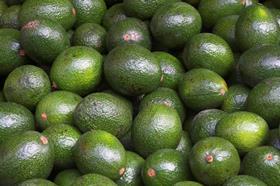
Europe’s seemingly insatiable appetite for avocados has raised concerns about the ability of producer countries to keep up with demand.
According to Cindy Van Rijswick of Rabobank Research Food & Agribusiness, EU consumption of avocados has increased by nearly 150 per cent over the last decade to just under 1kg per capita.
Although EU consumption is unlikely to reach the level seen in the US, where per capita consumption is around three times higher, rising demand is putting pressure on its main sources in Peru, Chile, South Africa, Israel and Mexico.
Growing demand for avocados in the huge Asian market is also expected to further exacerbate this situation, Van Rijswick said.
Paul Devlin, managing director of South African producer Halls’ European arm, suggested that increasing per capita consumption to 2kg by 2020 would be a tall order. “Only if production grows,” he stated, “but only Mexico, Peru and Colombia can feed this insatiable global demand for avocados.”
The most rapid growth in avocado production is being seen in Colombia, where volumes have grown by 550 per cent a year between 2012 and 2016, according to data from ITC.
Asked about the ability of other sources, including Spain, Morocco, Greece, Australia, New Zealand, Zimbabwe and Tanzania, to help bridge the gap in supply, Devlin responded that plantings would struggle to keep pace.
“These origins are planting,” he said, “but in many countries there are waiting lists for avocado trees of 3-5 years. Even at a moderate 10 per cent growth in demand, the EU will need an additional 40,000 tonnes of avocados a year.”
Tatws Trading, a wholesaler in the north of Wales, revealed that supplies of avocados had been short this week, with only loose Class 2 Hass available.
Belgian importer Special Fruit, on the other hand, reported no such shortages. “Currently, we still have sufficient supplies from Peru, in addition to the first arrivals from Chile,” said marketing and communications coordinator Sarah Hellemans. “We do expect shortages from mid-September on, however, when there will be no more fruit from Peru. Chile and Colombia will be the main suppliers between October and December.”



